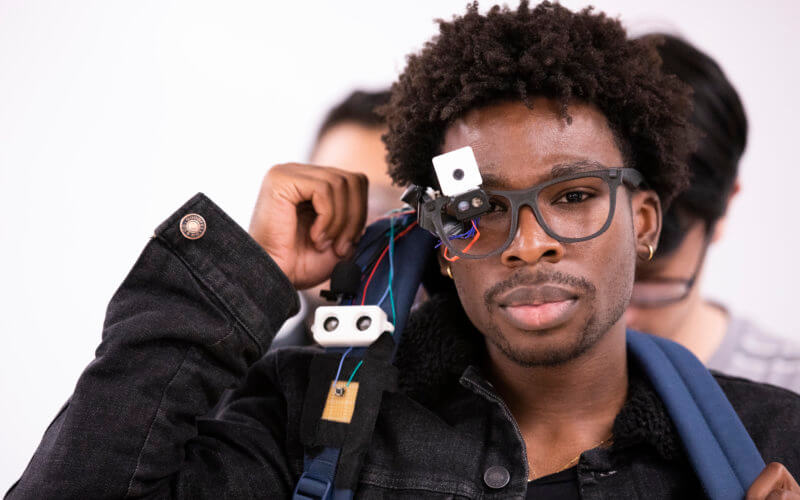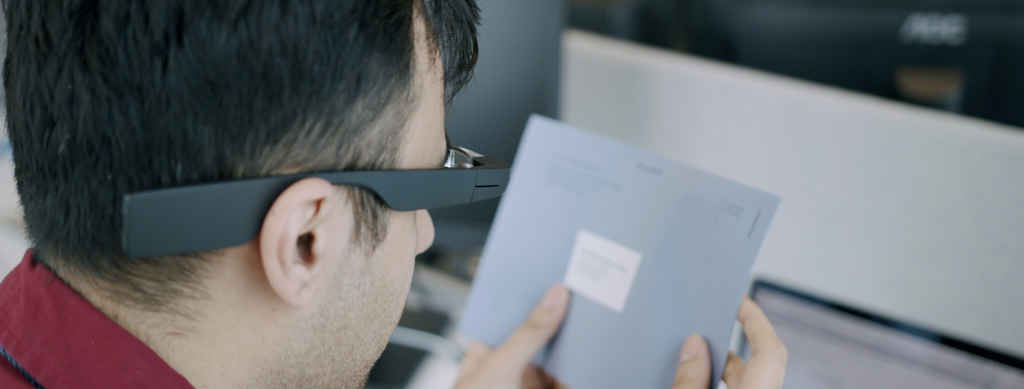Voice-Activated Assistive Devices: Empowering the Visually Impaired Through Innovation
Voice-Activated Assistive Devices: Empowering the Visually Impaired Through Innovation
Blog Article
Empowering Self-reliance With Assistive Innovation for the Blind
The assimilation of assistive modern technology for individuals who are visually impaired or blind stands for a significant innovation in cultivating independence and enhancing lifestyle. With a variety of tools-- from display viewers to cutting-edge responsive devices-- these innovations not only assist in navigation and communication but likewise promote social inclusion and participation in various aspects of life. As we explore the diverse sorts of assistive devices and their real-world applications, it becomes clear that the impact is profound. The development of this modern technology elevates crucial concerns concerning accessibility and future developments that require more exam.
Comprehending Assistive Technology
Although assistive modern technology has advanced dramatically throughout the years, its essential purpose stays the exact same: to improve the lifestyle for individuals with impairments, particularly those that are aesthetically damaged or blind. This innovation incorporates a broad variety of devices and gadgets that help with freedom and functionality in everyday tasks.
Assistive modern technology can be classified into sophisticated and low-tech remedies, each created to satisfy details needs. High-tech gadgets frequently consist of software program applications, specialized hardware, and adaptive gadgets that use innovative technology to supply support in different contexts. Alternatively, low-tech options might include everyday things that are changed to enhance accessibility, such as magnifiers or responsive pens.
The integration of assistive innovation right into the lives of people that are blind or aesthetically harmed not just advertises autonomy however likewise fosters social addition and involvement in specialist and instructional settings. By leveraging these modern technologies, users can navigate their surroundings, gain access to information, and communicate effectively, therefore enhancing their total lifestyle. Understanding assistive technology is important for supporters, specialists, and caretakers that aim to support people in maximizing their potential and attaining higher self-reliance.
Sorts Of Assistive Gadgets
Assistive devices for the blind and visually damaged are important tools that enhance daily obeying attending to certain challenges encountered by users. These tools can be extensively categorized right into three major kinds: optical devices, digital tools, and sensory gadgets.

Sensory devices, such as Braille displays and responsive maps, provide alternative methods to receive info. Braille displays convert electronic text right into Braille, allowing individuals to review touch. Responsive maps provide spatial understanding through increased lines and textures, allowing for much better ecological awareness.
Together, these assistive devices empower individuals with aesthetic problems to engage more totally with their surroundings, advertising greater freedom and confidence in day-to-day activities.

Influence on Daily Life
The combination of assistive modern technology into the everyday lives of people that are blind or aesthetically impaired significantly improves their capacity to browse and interact with the world around them. Gadgets such as display readers, Braille displays, and mobile applications help with access to info, allowing users to engage with digital material, interact effectively, and manage daily tasks independently.
Moreover, innovations like clever glasses and navigating applications give real-time support in unfamiliar atmospheres, boosting mobility and confidence. These devices enable customers to recognize challenges, read indicators, and also identify faces, hence fostering a sense of autonomy in public spaces. In addition, home automation systems, which can be regulated via voice commands, permit people to manage their living atmospheres better, improving comfort and safety.
The influence of assistive modern technology expands beyond useful tasks; it advertises social addition and emotional well-being. By bridging the void between individuals and their surroundings, these modern technologies encourage individuals to take part completely in neighborhood activities, seek academic chances, and take part in significant relationships. Inevitably, the innovation of assistive modern technology contributes in redefining the possibilities for people who are aesthetically impaired or blind, resulting in an extra comprehensive and easily accessible culture.
Success Stories and Testimonies

An additional useful link powerful testimony originates from Mark, a current college graduate that made use of screen analysis software application throughout his academic journey. This modern technology allowed him to access course materials and take part in discussions, inevitably causing his effective transition into the workforce. Mark credit reports assistive technology for equipping him to achieve his job goals, highlighting its duty in leveling the playing area for individuals with aesthetic impairments.
Furthermore, neighborhood centers have actually reported boosted participation in their programs many thanks to the introduction of accessible electronic systems. These platforms have actually made it less complicated for people to link, share sources, and assistance each other. These success stories jointly underscore the profound result of assistive innovation in cultivating freedom, boosting quality of life, and breaking down barriers for the blind and aesthetically damaged community.
Future Trends in Assistive Technology
Arising innovations are poised to transform the landscape of assistive tech for people that are aesthetically damaged or blind. Advancements in man-made intelligence (AI) and artificial intelligence are boosting the capacities of gadgets, enabling even more user-friendly user experiences. For example, AI-driven applications are significantly able to acknowledge objects and read message aloud in real-time, giving individuals with important details regarding their surroundings.
Furthermore, developments in wearable modern technology are producing brand-new opportunities for freedom. Smart glasses geared up with increased reality functions can overlay important information onto the customer's visual field, helping with navigating and interaction with the environment. The integration of Internet of Things (IoT) devices is improving availability in clever homes, permitting customers to regulate devices and obtain alerts via voice commands or responsive user interfaces.
The growth of braille display screens and responsive responses systems is additionally increasing, advertising access to digital content and improving interaction. As these innovations remain to progress, they guarantee to boost daily living, academic possibilities, and work leads for individuals with visual impairments. Continuous partnership between engineers, individuals, and advocacy groups will be important in making certain these innovations satisfy the requirements of the community properly.
Verdict
In verdict, assistive technology plays a critical function in enhancing the independence of individuals who are aesthetically damaged or blind. By supplying necessary tools and sources, these modern technologies facilitate boosted access, navigating, and interaction to details, thus fostering autonomy and confidence. The transformative influence of assistive devices not just advertises efficient communication with the environment however also motivates social incorporation and participation in numerous aspects of life, eventually equipping users to flourish within their areas.
The integration of assistive innovation for people that are blind or visually impaired represents a significant improvement in fostering self-reliance and boosting top quality of life.The integration of assistive innovation right an eye exam into the lives of individuals who are blind or aesthetically harmed not only promotes autonomy however additionally fosters home social addition and engagement in educational and professional environments. Eventually, the improvement of assistive modern technology is important in redefining the opportunities for individuals who are aesthetically damaged or blind, leading to an extra available and comprehensive culture.
Several individuals who are aesthetically damaged or blind have actually shared inspiring success tales that highlight the transformative influence of assistive modern technology on their lives.In verdict, assistive modern technology plays a pivotal role in enhancing the independence of people that are blind or aesthetically impaired.
Report this page